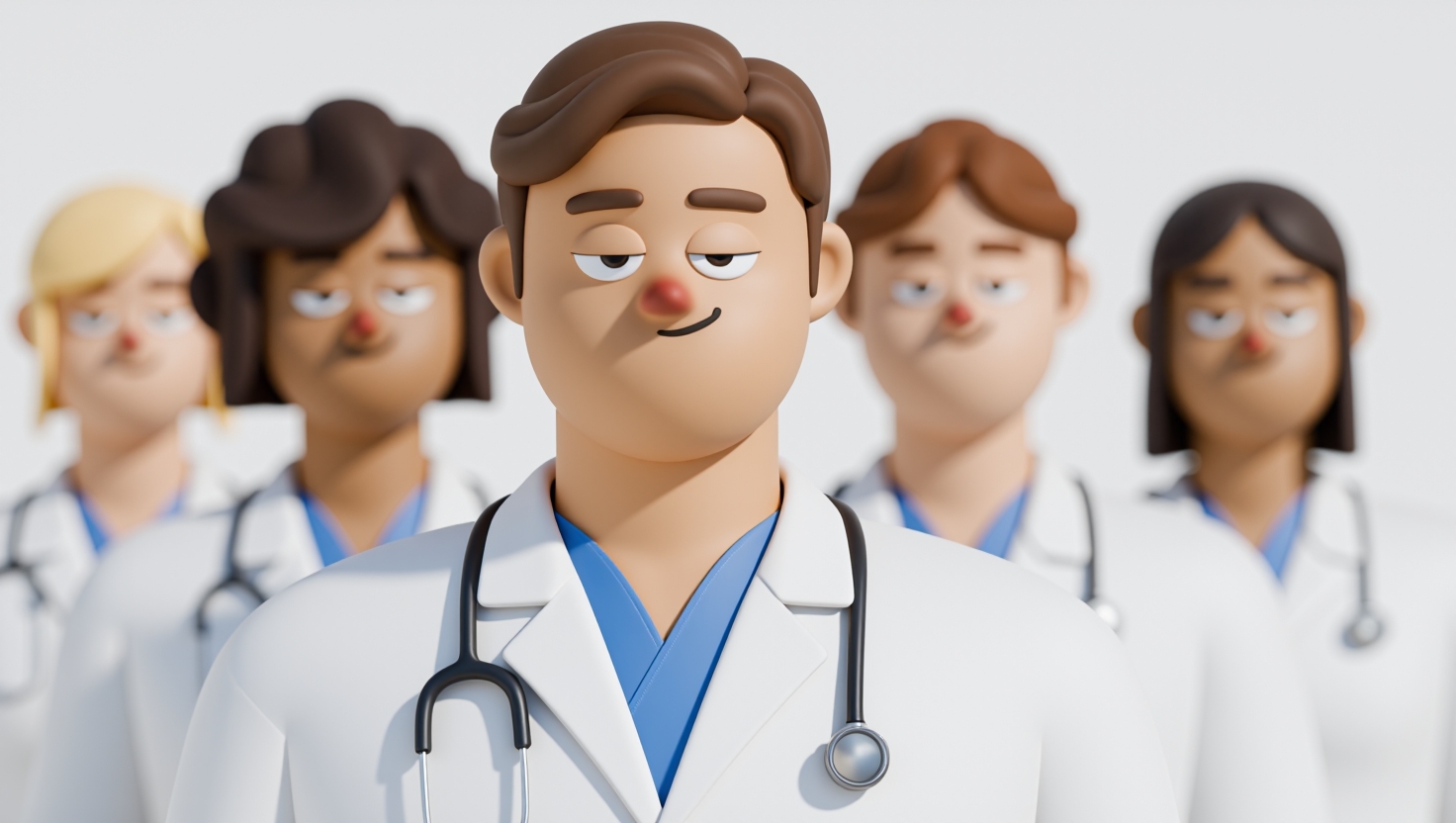Oxygen Level 81 While Sleeping: What to Do
Sleep and Sinus Centers of Georgia
When it comes to sleep health, oxygen levels are a crucial—yet often overlooked—indicator of your overall well-being. Maintaining stable oxygen saturation throughout the night isn’t just about having restful sleep—it supports every major organ in your body, from your heart to your brain. If you’ve ever monitored your oxygen level while sleeping and noticed a concerning number, you might wonder what it signifies and what steps you should take next. In particular, an oxygen level of 81% while sleeping is a serious warning sign that should never be ignored.
This article explains what your oxygen numbers really mean, outlines the risks linked to a low reading like 81%, identifies common causes during sleep, and helps you understand when and how to seek medical help. Our goal is to provide clear, patient-friendly information so you can protect not only your sleep but also your long-term health.
Quick Answer: Is an Oxygen Level of 81 While Sleeping Dangerous?
In short: yes—an oxygen level of 81% during sleep is dangerously low, especially if sustained or recurrent. Normal oxygen saturation levels (SpO2) typically remain between 95% and 100% in healthy adults, both awake and asleep. Brief, very short dips below 90% can occur naturally during certain sleep stages or brief airway obstructions, but levels consistently below 90% raise concern. Falling as low as 81% signals severe hypoxemia—meaning your body is not getting enough oxygen to function properly (1,2).
This low oxygen level can have immediate and serious consequences by affecting vital organs like your heart and brain. For example, your heart might beat irregularly or strain to pump blood, and prolonged or repeated episodes of low oxygen can affect brain function, potentially leading to symptoms like confusion or memory difficulties. If you notice a reading this low, prompt medical evaluation is essential to avoid dangerous complications.
Low oxygen saturation at this level requires urgent attention to protect your health.
Understanding Oxygen Levels and Hypoxemia
What is Oxygen Saturation?
Oxygen saturation, or “SpO2,” refers to the percentage of hemoglobin molecules in your blood that are carrying oxygen. Hemoglobin is like a delivery truck, transporting oxygen from your lungs to the rest of your body. For most people, oxygen saturation stays between 95–100% during both waking hours and sleep, indicating that the blood is well oxygenated.
Think of it this way: if your hemoglobin trucks are only 81% full, they aren’t delivering close to the amount of oxygen your tissues need. That’s when problems can arise.
What Does an Oxygen Level of 81 Mean?
An oxygen saturation reading of 81% means you are experiencing severe hypoxemia. At this level, your organs and tissues aren’t getting sufficient oxygen to perform their vital functions. Sustained hypoxemia can cause symptoms ranging from mild confusion and shortness of breath to more severe effects such as heart strain or, if untreated, organ failure (2).
Imagine trying to run your car with limited fuel—eventually, your car won’t function properly. Similarly, your organs require oxygen to generate energy and work efficiently; without it, they quickly start to struggle.
Severe hypoxemia reflects a significant oxygen deficit that needs medical evaluation.
Causes and Mechanisms of Low Oxygen Levels While Sleeping
Common Causes of Oxygen Level 81 While Sleeping
Many conditions can cause your oxygen level to drop dangerously low during sleep. These include:
- Obstructive Sleep Apnea (OSA): This is one of the most common causes. In OSA, the muscles in the back of your throat intermittently relax and block your airway, stopping airflow completely and causing sharp oxygen drops. One common symptom is waking up gasping, which serves as a red flag for sleep apnea.
- Chronic Obstructive Pulmonary Disease (COPD): Diseases such as emphysema or chronic bronchitis damage lung tissue, reducing their ability to absorb oxygen effectively.
- Heart Conditions: If the heart cannot pump blood efficiently (such as in heart failure), oxygen delivery throughout the body may decline.
- High Altitude Sleeping: At elevations significantly above sea level, the air contains less oxygen. This can cause your oxygen levels to fall during sleep, particularly if you have underlying health issues (1).
- Other Respiratory Illnesses: Conditions like pneumonia, severe asthma attacks, or even a bad case of the flu can impair breathing and reduce oxygen saturation.
How These Conditions Cause Hypoxemia
Most causes of low nighttime oxygen involve either impaired lung function or airway blockage. For instance, in sleep apnea, your airway repeatedly collapses during sleep, causing pauses in breathing that drop oxygen levels sharply. Lung and heart diseases compromise your body’s ability to oxygenate blood or circulate it effectively, leading to sustained hypoxemia.
One way to visualize this is to think of a factory assembly line: if the supply of raw material (oxygen) is interrupted or the transport vehicles (blood flow) are faulty, production (cell metabolism) slows and errors accumulate, harming overall function.
Understanding the underlying cause is key to proper treatment and management.
Symptoms to Watch For During Sleep and Upon Waking
You might not always realize your oxygen is low while sleeping unless you use a pulse oximeter or similar device. However, certain symptoms can serve as warning signs:
- Gasping or Choking at Night: Sudden awakenings accompanied by gasping or a choking sensation can indicate oxygen dips.
- Loud Snoring or Pauses in Breathing: Bed partners may notice noisy or irregular breathing patterns, common in sleep apnea.
- Morning Headaches: Oxygen deprivation overnight can cause headaches upon waking.
- Daytime Sleepiness and Fatigue: Excessive tiredness or difficulty staying alert during the day may result from poor oxygen levels at night.
- Confusion, Dizziness, or Chest Pain: If you experience severe or sudden onset of symptoms like chest pain or confusion, seek emergency care immediately.
If you experience any combination of these symptoms, especially along with persistent low oxygen readings, it’s important to take action sooner rather than later.
Recognizing symptoms early can prevent serious health consequences.
When to See a Doctor
If you or someone you know records an oxygen level as low as 81% while sleeping, or even consistently below 90%, it’s imperative to seek medical evaluation promptly. Even if you feel “fine,” low oxygen at night can silently damage your heart, brain, and overall health over time (1,2).
Other urgent warning signs include:
- Worsening shortness of breath during day or night
- Bluish discoloration of lips, face, or fingernails (cyanosis)
- Persistent, unexplained fatigue or weakness
- Chest pain, pressure, or tightness
Doctors may recommend a formal sleep study, overnight pulse oximetry, or other diagnostic tests to determine the underlying cause and guide effective treatment.
Early professional assessment is critical to preventing complications.
Treatment Options for Low Oxygen Levels During Sleep
Medical Interventions
Treating severe hypoxemia while sleeping often requires medical support, such as:
- Supplemental Oxygen Therapy: Delivering additional oxygen through a mask or nasal cannula helps maintain safe blood oxygen levels and reduces strain on vital organs.
- CPAP or BiPAP Machines: For sleep apnea sufferers, these devices keep airways open by providing continuous or variable positive airway pressure, preventing breathing interruptions.
- Medications: Depending on the root cause, treatments might include inhalers for asthma, bronchodilators for COPD, or medications to support heart function. Treatment is tailored based on specific diagnosis.
- Hospitalization: In acute or life-threatening cases, hospital care is critical for close monitoring, oxygen support, and stabilization.
Doctors customize treatments based on your diagnosis, symptom severity, and overall health.
Long-Term Management
Managing low oxygen at night involves looking beyond immediate fixes and focusing on root causes, such as:
- Strictly following care plans for lung or heart disease
- Weight management when obesity contributes to airway obstruction
- Avoiding smoking and environmental pollutants
- Regular follow-ups with sleep and respiratory specialists to adjust treatment plans
Long-term management improves not only oxygen levels but also quality of life and cardiovascular outcomes.
Combining medical treatments with lifestyle changes supports better health outcomes.
Home Strategies to Support Healthy Oxygen Levels
While medical evaluation and treatment are paramount for severely low oxygen, you can support healthier nighttime oxygen levels at home with these practical tips:
- Positional Therapy: Sleeping on your side (instead of your back) can reduce airway collapse in some people with sleep apnea.
- Avoid Alcohol and Sedatives Before Bed: These substances relax throat muscles, worsening airway obstruction and oxygen dips.
- Keep Airways Moist: Using a humidifier in your bedroom can soothe irritated airways and help keep them open.
- Ventilate Your Sleeping Area: Fresh air circulation reduces stuffiness and may ease breathing.
- Home Monitoring: With your provider’s guidance, using a pulse oximeter at home can track overnight oxygen trends and alert you to problems early.
Keep in mind that pulse oximeters can be affected by factors like poor circulation, nail polish, skin pigmentation, or motion, which may lead to inaccurate readings. Discuss any home monitoring plans with your healthcare professional.
Safe home practices can complement medical treatment but do not replace it.
Frequently Asked Questions (FAQs)
Q1: What is a safe oxygen level during sleep?
A: For most healthy adults, oxygen saturation remains above 95%. Brief drops into the low 90s can occur naturally, especially during REM sleep, but levels consistently below 90%, particularly with symptoms, warrant medical evaluation.
Q2: Can an oxygen level of 81% return to normal without treatment?
A: It’s unlikely for oxygen levels this low to improve on their own without addressing the underlying problem. Immediate medical assessment is always recommended.
Q3: How can I monitor my oxygen level at home safely?
A: Home pulse oximeters are widely available and easy to use but should be utilized under healthcare guidance. Test results should be interpreted cautiously and discussed with a provider to decide on next steps.
Q4: Is sleep apnea the only cause of low oxygen levels during sleep?
A: No. While sleep apnea is a common cause, other serious conditions such as lung diseases, heart problems, and environmental factors like high altitude can all contribute to low oxygen saturation.
Q5: What are the risks of untreated low oxygen levels while sleeping?
A: Ongoing low oxygen stresses your cardiovascular and nervous systems and increases risks for heart disease, stroke, cognitive decline, and even sudden cardiac events.
Book an Appointment
Noticing warning symptoms or recording a dangerously low oxygen level like an 81% saturation while sleeping warrants expert intervention. Early recognition and treatment can dramatically improve sleep quality and protect your long-term health. If you’re concerned about low nighttime oxygen or suspect a sleep disorder, the Sleep and Sinus Centers of Georgia are ready to help. Schedule a consultation with our experienced team to get the answers and tailored solutions you need. Contact us today to take the next step toward healthier, safer sleep.
This article is for educational purposes only and is not medical advice. Please consult a qualified healthcare provider for diagnosis and treatment.
References
- Altitude Control. What Is a Dangerously Low Oxygen Level While Sleeping? https://altitudecontrol.com/what-is-a-dangerously-low-oxygen-level-while-sleeping
- Cleveland Clinic. Hypoxemia https://my.clevelandclinic.org/health/diseases/17727-hypoxemia
- American Thoracic Society. Oxygen Therapy and Hypoxemia. https://www.thoracic.org/patients/patient-resources/resources/oxygen-therapy.pdf
For more information or to schedule a sleep evaluation, contact Sleep and Sinus Centers of Georgia today. Your health and safety—especially while sleeping—are our top priorities.
Don’t let allergies slow you down. Schedule a comprehensive ENT and allergy evaluation at Sleep and Sinus Centers of Georgia. We’re here to find your triggers and guide you toward lasting relief.



